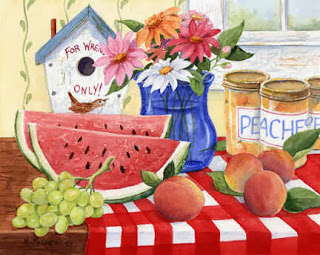BILINGUAL ART CLASS:
>>>For more examples: (click en la foto)
>>> How to do it Watch this video:
A still life (plural still lifes) is a work of art depicting mostly inanimate subject matter, typically commonplace objects which may be either natural (food, flowers, dead animals, plants, rocks, or shells) or man-made (drinking glasses, books, vases, jewelry, coins, pipes, and so on). With origins in the Middle Ages and Ancient Graeco-Roman art, still-life painting emerged as a distinct genre and professional specialization in Western painting by the late 16th century, and has remained significant since then.
(Wikipedia Enciclopedia libre.)
(Wikipedia Enciclopedia libre.)
Enlaces para saber más:
- Wikipedia:
- Artyfactory:
- Listen to this music while creating your Still life artworks:

